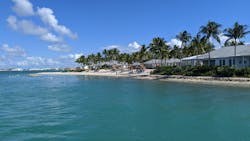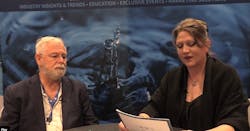ORLANDO, FL, MARCH 2, 2020 -- The U.S. Environmental Protection Agency (EPA) recognized two organizations in Florida as recipients of South Florida Geographic Initiative (SFGI) Program grants. The grants are for projects that support protection and restoration of water quality, corals and seagrass in South Florida.
“EPA is proud to support projects that will help address environmental needs and challenges in South Florida waters,” said EPA Region 4 Administrator Mary S. Walker. “EPA is proud to fund local projects that will restore habitats and foster environmental awareness.”
“Our project is a great example of UCF’s role as “America’s Partnership University.” Federal, state and local partners will help identify sites most in need of sampling in South Florida, from Lake Okeechobee to the Florida Reef Tract, said University of Central Florida Associate Professor of Biology Dr. John E. Fauth. “Working with Virginia-based Haereticus Environmental Laboratory, our goal is to rapidly provide scientific data that will help resource managers, policy makers and concerned citizens protect Florida waters from harmful endocrine disrupting chemicals.”
“Monroe County is pleased to be able to use these grant funds to develop a master plan that will ultimately help us control the huge influx of Sargassum that invades the canal system in the Keys every summer, choking our waterways and causing serious water quality and breathing issues,” said Monroe County Chief Resilience Officer Rhonda Haag.
The SFGI grants include:
- University of Central Florida, Orlando, Fla. - $199,984.50 will be used on a monitoring program that will screen for pesticides, UV filters (sunscreen), pharmaceutical products and hydrocarbons in South Florida during wet and dry events from land-based sources of pollution from agricultural and residential canals, inlets, ocean outfalls, and neighborhoods serviced by septic tanks. Data will be used to provide recommendations for management actions for the Florida Keys National Marine Sanctuary (FKNMS) Water Quality Protection Program and the Southeast Florida Coral Reef Initiative programs.
- Monroe County, Marathon, Fla. - $149,995 will be used to investigate barrier technology to address record amounts of sargassum / seaweed smothering South Florida beaches and filling residential canals in recent years. Sargassum decomposition on beaches smells bad, attracts insects, smothers turtle nesting sites, causes fish kills, and diminishes tourism. Sargassum is not toxic although, as it decomposes, hydrogen-sulfide gas is released that can be unhealthy/problematic to those with asthma or respiratory conditions.
SFGI grants are used to fund South Florida Program projects for the FKNMS Water Quality Protection Program, Southeast Florida Coral Reef Initiative, Caloosahatchee Estuary, Indian River Lagoon, Florida Bay and Biscayne Bay. The South Florida marine environment features world-class beaches, fishing and diving; highly-productive estuaries, extensive seagrass meadows, deep-water ports and the only coral barrier reef in the continental United States. These valuable natural resources provide for recreational and commercial fisheries, the multi-billion-dollar tourism economy, major shipping ports, and the millions of people residing along the coast.
For more information on the SFGI RFA and directions to apply for a grant, visit https://www.grants.gov/web/grants/home.html



